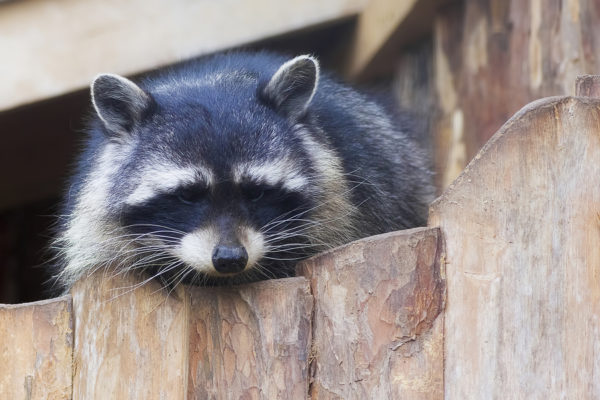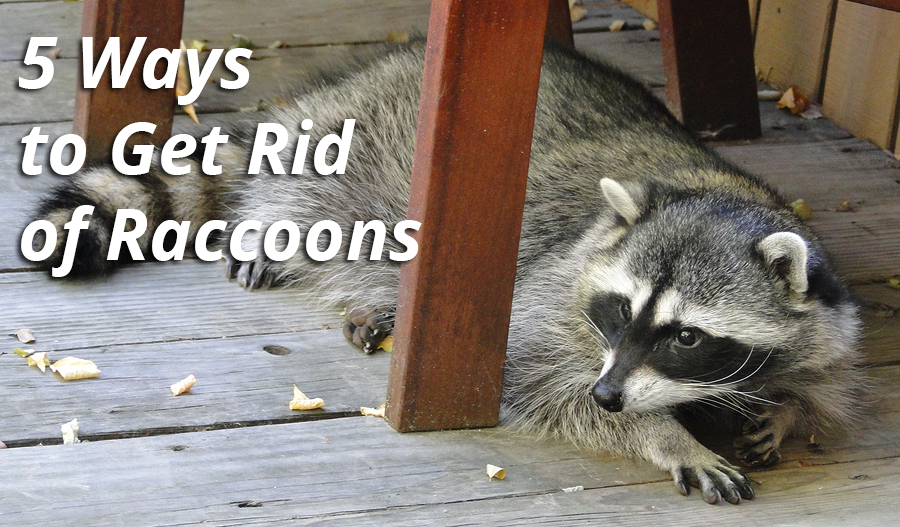READY TO GET STARTED?
REQUEST A FREE ESTIMATE
Fill out the form below or call (888) 466-7849 for a free, no-obligation estimate.

Most of us have seen a raccoon, whether in person or as a cute, cuddly cartoon character. Unfortunately, these furry animals are not only dangerous to humans, but can cause significant damage and destruction to both your home and your yard. Raccoons are known to carry several bacterial diseases and parasites including rabies, salmonella, and roundworms.
Although raccoons are wild animals, they are becoming more and more common in urban areas as our population grows and their food and shelter sources diminish. They prefer to make their dens in hollowed out trees but these are fewer and far between in urban areas so they are forced to be more creative in their hunt for a home. Raccoons are now more often getting inside OUR homes, especially in the attic in search of shelter and food.
Raccoons are very dexterous animals and can use their hands to open doors, jars, bottles, and latches. They are also excellent climbers. These skills allow them to access our attics much more easily than other animals. But how do you know if you have a raccoon in or around your home? You can look for any of these signs:
Once you have determined there is a raccoon in your attic, how do you get rid of it? While many people prefer to remove raccoons themselves, it’s not recommended. A wildlife removal company can not only safely remove the raccoons, but also clean up any contamination and offer exclusion methods to prevent them from returning. One thing to consider is that there is often a nest of babies along with the adult raccoon. Baby raccoons must be removed by hand. Wearing thick leather gloves, babies can be picked up by hand and carried out in a pillowcase. They can then be used to trap the adult raccoon or safely relocated. You can also trap the adult by scaring it into a pre-set trap or by catching it with a snare pole and putting it in a cage. Once the raccoons have been caught and removed, inspect your home to find entry points and then seal all areas to prevent raccoons and other pests from getting back into your home.
Most of us would prefer to avoid the process of removing raccoons (or having them removed) from our homes. So what can you do to prevent them from coming into your attic in the first place? Here are 5 tips for keeping raccoons out of your home:

Raccoons, a common animal nuisance throughout the U.S., are nocturnal therefore rarely seen during the day. At night, they’ll leave their dens (often your chimney or attic), in search of food and water. Because they’re omnivorous and will eat mostly anything – other animals, fruit, plants, nuts, fish, insects, mice, etc. – there’s likely a food source in or around your home. So what’s the risk? Raccoons are known to carry rabies, cause significant structural damage to homes, destroy gardens, and leave behind a messy trail of trash after raiding garbage cans left outside.
Prevent disease and destruction by following the 5 tips below.
If left outdoors around your home, trash cans will surely attract raccoons looking for food. Instead, keep garbage stored in your garage, basement, or storage building and take out regularly. If you don’t have storage space indoors, use garbage bins with animal-proof lids.
Inspect your home regularly for access points – holes, gaps, broken vents, loose siding, broken shingles, etc. – and seal or repair these to prevent raccoons from getting inside.
Chimneys are common entry points into your home for raccoons. Install a mesh cover or cap over chimney openings to keep them out, or call a wildlife control company to do this for you. They will also inspect your home for other issues and provide you with raccoon exclusion solutions to prevent an invasion.
Having bird feeders and pet food containers around your home will likely attract raccoons as it provides them with a steady food source. Consider removing bird feeders and only leave pet food out when your pets are eating.
Have a doggie door? This is an obvious and easy opening for raccoons to get in. Once your pet is indoors for the night, lock the pet door. You could also consider installing a door that only opens for your pet via an electronic signal, usually in the form of a collar your pet can wear.
These methods are great for raccoon prevention. If you think you have raccoons living in your attic, chimney, or crawl space, you don’t want to block them inside. Call a professional wildlife trapper that can safely remove the raccoons, clean up contamination, and offer exclusion methods that will keep them from coming back.